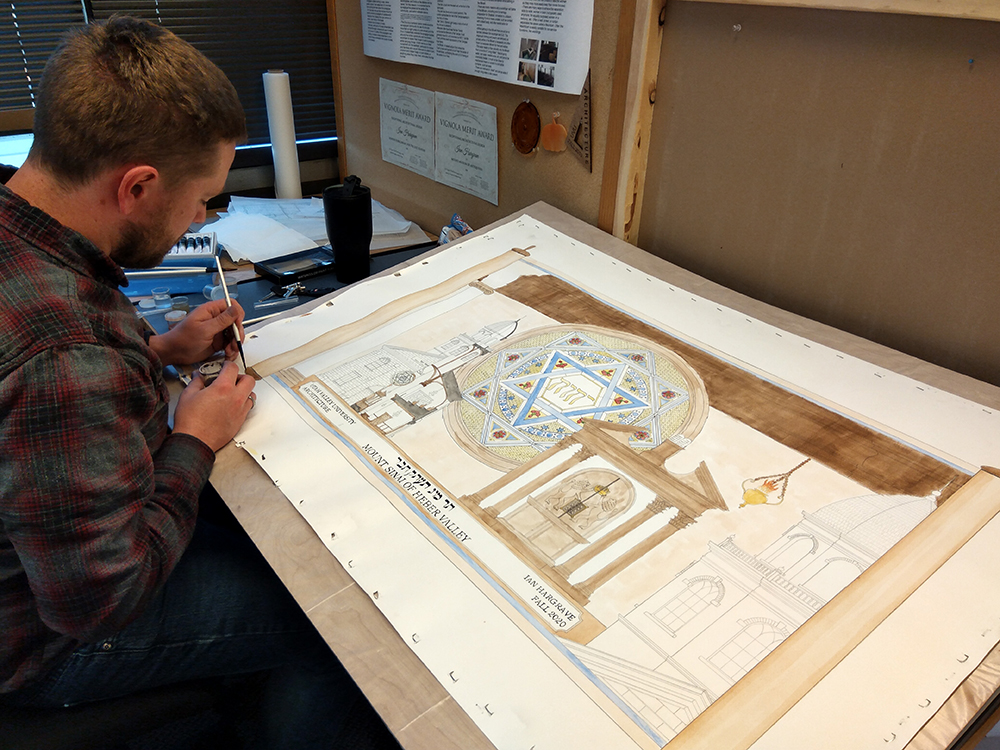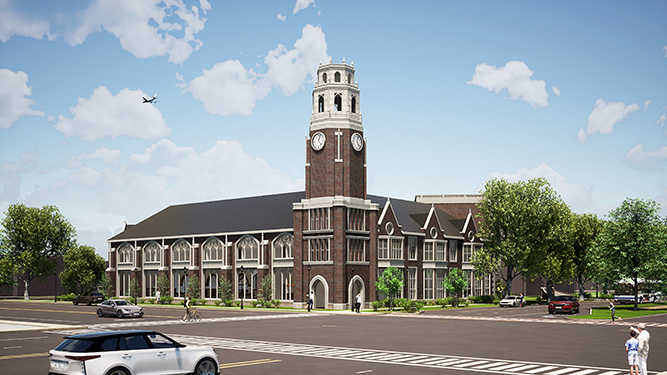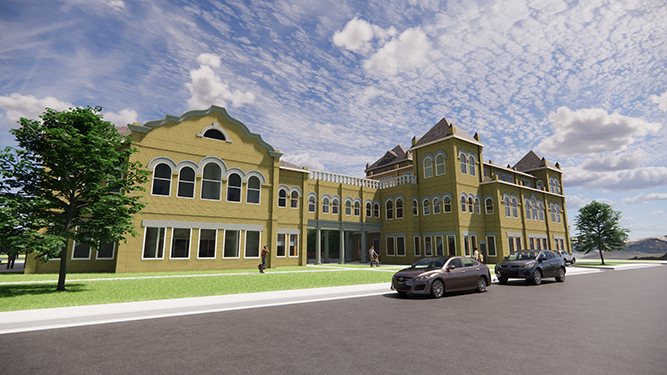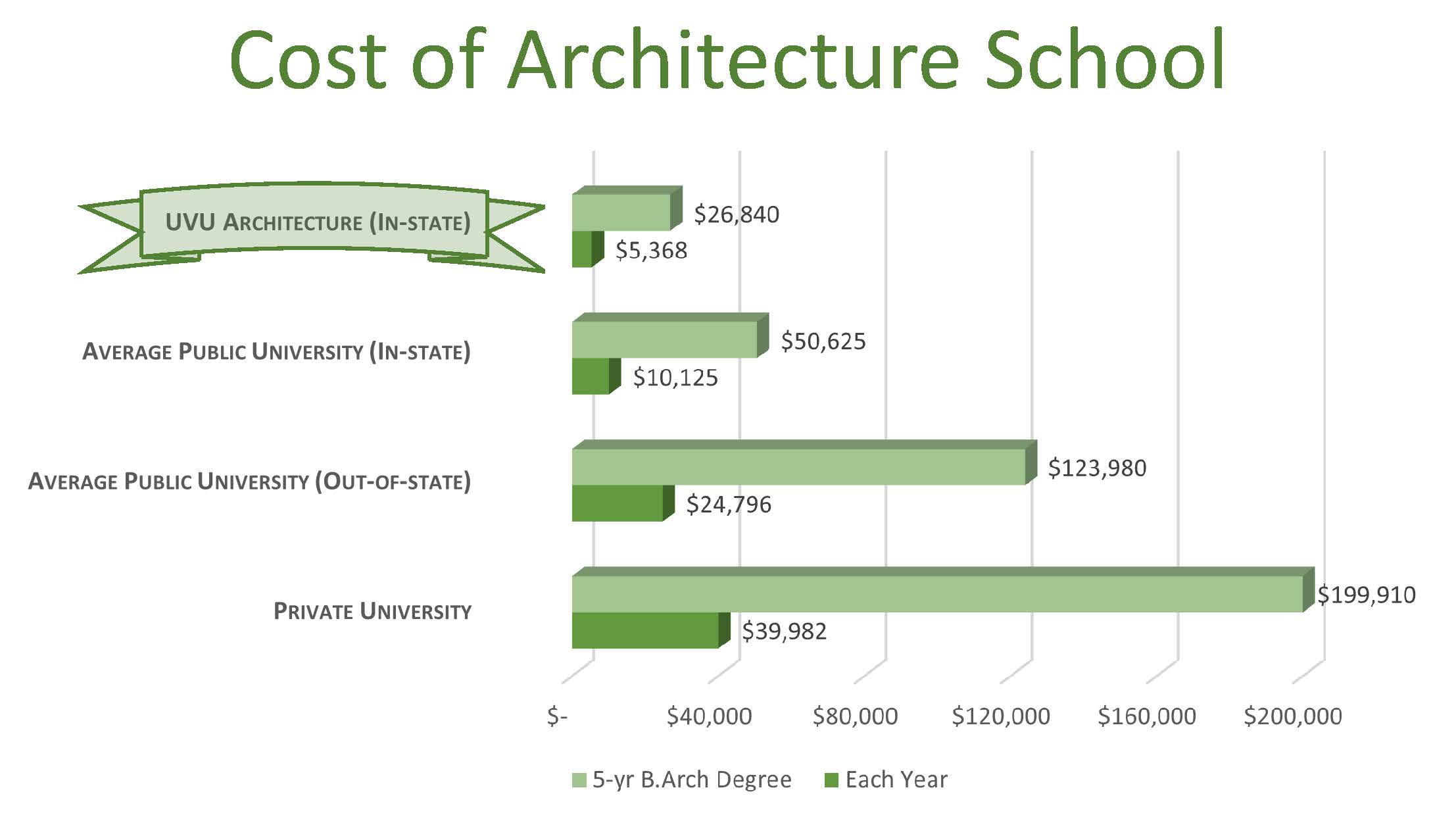 ARCHITECTURE
ARCHITECTUREUVU’s Bachelor of Architecture (B.Arch) is a five-year professional degree that prepares students for leadership in the profession of architecture and urban design. The program promotes a built environment that bolsters genuine communities through architecture that is durable, useful, beautiful, and human-scaled. The degree is rooted in classical and traditional architecture. The holistic foundation seeks to balance the art of building with aesthetic sensibilities, historical precedents with contemporary needs, craftsmanship with digital technologies, and theory with practice-based application. The goal of these efforts is to produce “master builder” practice-ready graduates. Our students go forth to create a lasting and beautiful world that uplifts the human spirit.

We infuse our students with an understanding of the importance of defending the authenticity of the human experience by honoring and preserving the spirit of a place, its culture, traditions, memory, and history. We study architectural precedents to learn from the past and address design challenges in a culturally and contextually sensitive way. We teach students the importance of approaching the design process with empathy, compassion, and humility so one might build upon the past and preserve the embodied history of architecture.
The newly created Architecture Program at UVU is a five-year professional degree designed to meet the National Architectural Accreditation Board (NAAB) requirements. The degree features a rigorous design-oriented curriculum with a solid foundation in technology, practice-based coursework, plan and document generation, building codes, specifications, digital parametric modeling, building information modeling, architectural visualization, digital fabrication, building envelope systems, structural systems, and building sustainability. Students will become experts in current design and building technologies, making them ideal employees in architecture offices and related design & construction industries including civil, mechanical, and electrical.
The program at UVU emphasizes education in the classical and vernacular architecture. Students will research the traditional principles and philosophies of history to encourage a sense of community, a balance and respect with our natural environment, and wise use of limited resources and energy. Program coursework will study the past to inform the future. We emphasize the enduring design standards from history to inform and incorporate ideas into cutting edge technologies and solutions for modern society.
The program is structured as a two plus three stackable credential, awarding an Associate of Science in Engineering Design Technology after the first two years and a comprehensive Bachelor's degree for the final three years. This allows students who do not wish to pursue licensure a two-year path into the profession. In their final three years, students engage in coursework which readies them to become licensed, practicing architects, projects managers, principals, owners, and community leaders in the profession. Students acquire leadership skills through courses in professional practice, ethics, and architectural registration exam preparation.
Students learn to design buildings in a historical and cultural context through rigorous coursework in history, theory, culture, study abroad, and community service projects. Concurrently, students engage in arts and science courses to expand critical thinking. A total of at least 151 hours of coursework is required for the Architecture degree.
Please note: Students accepted to the 3rd year of the Architecture Degree Program are required to purchase a quality laptop computer before the beginning of the Fall semester. It will be used for the final three years of their education on multiple design projects.


We understand that attending a professional degree program in architecture is a commitment of time and resources. In this section we give you a breakdown of how UVU Architecture's program compares to other schools around the country and what you can expect in book, material, and supply costs each semester.

Year |
Courses |
Costs |
|
Year 1 - $650 |
EGDT 1020 EGDT 1100 ARC 1010 General Education Classes |
$50 – software fee + misc. $50 – software fee + misc. $200 - supplies $350 – books + misc |
|
Year 2 - $1,000 |
EGDT 2100 EGDT 2600 ARC 2110 ARC 2210 ARC 2220 General Education Classes |
$25 - misc $25 - misc $300 – material and supplies $300 – material and supplies $100 – books and supplies $250 – books + misc |
|
Year 3 - $1,025 |
EGDT 2610 ARC 3110 ARC 3210 ARC 3120 ARC 3220 ARC 3230 ARC 3130 |
$25 - misc $300 - material and supplies $300 - material and supplies $100 - books + misc $100 - books + misc $100 - books + misc $100 - books + misc |
|
Year 4 - $1,000 |
ARC 4110 ARC 4120 ARC 4130 ARC 4210 ARC 4220 ARC 4530 Elective |
$300 - material and supplies $100 - books + misc $100 - books + misc $300 - material and supplies $100 - books + misc $100 - books + misc varies |
|
Year 5 - $1,900 |
ARC 4510 ARC 4230 ARC 4540 ARC 4610 Elective (x4) |
$800 – material, supplies, travel $500 – material, supplies, travel $100 - books + misc $500 – material, supplies, travel varies |
|
General - $2,950 |
|
$450 ($45 computer lab fee each semester x 10 semesters) $2,500 laptop and equipment (mouse, usb drives, etc.) |
|
TOTAL: $8,525 (Avg $852/semester) |
|
|

“UVU is deeply committed to fostering educational environments that nurture intellectual curiosity around global citizenship and intercultural responsibilities. As an open-enrollment institution, we recognize and acknowledge the potential of each individual by actively constructing campus-wide learning conditions characterized by respect, diversity, inclusion, and equity. We endeavor to cultivate healthier campus climates by intentionally shaping communities of care, advancing diverse systems of knowledge, and engaging innovative educational practices to promote critical worldviews toward transformative excellence.”
UVU Architecture upholds this vision and endorses the UVU 2020-2024 Inclusion Plan. More information about the creation of the Inclusion Plan and University Policies can be found here: https://www.uvu.edu/inclusion/.
UVU Architecture sustains diversity, equity, and inclusion by ensuring program accessibility through open enrollment and affordable degrees. We seek to train socially responsible architects who create better communities, emphasizing cultural sensitivity and the preservation of heritage. We are dedicated to fostering an inclusive work environment that values authenticity and diverse perspectives. Our commitment to equity and inclusion permeates all aspects of our program.
Utah Valley University does not discriminate on the basis of race, color, religion, national origin, sex, sexual orientation, gender identity, gender expression, age (40 and over), disability, veteran status, pregnancy, childbirth, or pregnancy-related conditions, citizenship, genetic information, or other basis protected by applicable law in employment, treatment, admission, access to educational programs and activities, or other University benefits or services.
Harassment and Discrimination Policy
https://www.uvu.edu/equalopportunity/discrimination/
Diversity and Affirmative Action Policy
https://www.uvu.edu/equalopportunity/affirmativeaction/index.html
In the United States, most registration boards require a degree from an accredited professional degree program as a prerequisite for licensure. The National Architectural Accrediting Board (NAAB), which is the sole agency authorized to accredit professional degree programs in architecture offered by institutions with U.S. regional accreditation, recognizes three types of degrees: the Bachelor of Architecture, the Master of Architecture, and the Doctor of Architecture. A program may be granted an eight-year term, an eight-year term with conditions, or a two-year term of continuing accreditation, or a three-year term of initial accreditation, depending on the extent of its conformance with established education standards. Doctor of Architecture and Master of Architecture degree programs may require a non-accredited undergraduate degree in architecture for admission. However, the non-accredited degree is not, by itself, recognized as an accredited degree.
Utah Valley University's Department of Architecture and Engineering Design offers the following NAAB-accredited degree program:
The NAAB grants candidacy status to new programs that have developed viable plans for achieving initial accreditation. Candidacy status indicates that a program expects to achieve initial accreditation within six years of achieving candidacy, if its plan is properly implemented. In order to meet the education requirement, set forth by the National Council of Architectural Registration Boards, an applicant for an NCARB Certificate must hold a professional degree in architecture from a program accredited by the NAAB; the degree must have been awarded not more than two years prior to initial accreditation. However, meeting the education requirement for the NCARB Certificate may not be equivalent to meeting the education requirement for registration in a specific jurisdiction. Please contact NCARB for more information.
Utah Valley University's Department of Architecture and Engineering Design was granted candidacy status for the following professional degree program in architecture:
Year candidacy awarded: 2022
Next visits:
Projected year to achieve initial accreditation: 2025
Earliest graduation date projected to meet NCARB education requirement: 2023
American Institute of Architects (AIA) www.aia.org
AIA Emerging Professionals Companion https://www.aia.org/career-center/emerging-professionals
Association of Collegiate Schools of Architecture www.acsa-arch.org
Institute of Classical Architecture & Art https://www.classicist.org/
National Architectural Accrediting Board (NAAB) www.naab.org
National Council of Architectural Registration Boards (NCARB) www.NCARB.org
UVU Career Development Center https://www.uvu.edu/cdc/
UVU Career Development Center Student Guide https://www.uvu.edu/cdc/docs/student_guide_2022-2023.pdf
American Institute of Architecture Students (AIAS) www.aias.org
Institute of Classical Architecture & Art - Emerging Professionals Utah (ICAA-EP)https://www.instagram.com/icaaeputah/?hl=en
National Organization of Minority Architects https://www.noma.net/
UVU Architecture - Learning & Teaching Culture Policy